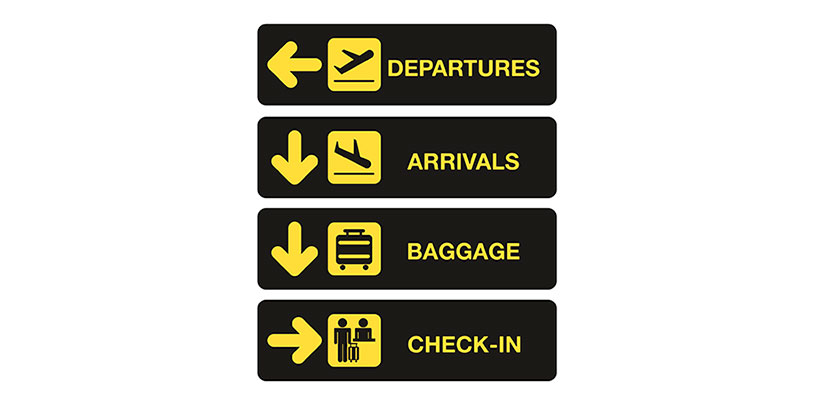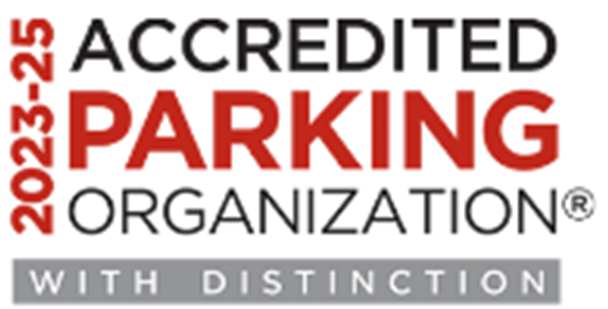The necessary fluidity of healthcare campuses makes wayfinding systems tricky to implement and even more challenging to maintain. Too often, wayfinding updates are limited to one plan of action: add more signs.
And then more signs.
And then add more information to those signs.
And so on.
This “fuel to the fire” approach doesn’t account for the different types of stimuli people need to navigate their journey, in turn damaging campus functionality and, consequently, the patient experience. Just as extra bandages won’t fix a wound, extra signage won’t fix a wounded wayfinding system.
Here are five ways to refresh your wayfinding system and create a seamless patient experience.
1. Progressive Disclosure

Progressive disclosure is the “little and often” approach to wayfinding found in airports. Signs are only placed in areas that require the navigator to make a decision, and contain only the information required to reach the next stage of a journey. This approach minimizes the clutter that can trigger stress, anxiety, and confusion.
“Having the right amount of information, and information that people will recognize quickly, is key,” Tripti Ninan, Impark’s marketing specialist, explains. “We assume people need extra words or images to make sense of information, but simpler is better. Someone who’s stressed or anxious isn’t in the right frame of mind to decipher a cluttered sign or site map.”
2. Jargon Elimination
Are you more comfortable visiting a mammography unit or a breast screening unit? A radiology department or an X-ray department?
Jargon — specialist language that’s difficult to understand — is rife in healthcare wayfinding systems. Sometimes, it’s a necessary evil. However, too much jargon can leave patients and visitors feeling isolated and intimidated by their environment, potentially undoing the good work of other patient experience (PX) innovations on-site. An effective wayfinding system, therefore, scaffolds the physical distance between patients and their destinations and the psychological distance between patients and their service providers by using the simplest language choices available.
3. Color

Multiple studies have shown that color improves wayfinding performance. However, color combinations should be selected carefully. Low-contrast color combinations, such as yellow and white, are difficult to read and process. Thus, high-contrast colors are preferable — they attract positive attention, are easy-to-read, and are quick to process.
Some colors encode significant circumstantial messages that should be carefully considered before use. The UK’s National Health Service (NHS), for example, has codified guidelines for using the color red due to its common application in signage and symbols indicating urgency and danger. The NHS suggests that red should be used only for safety and ER signage, as using it for other purposes “may lead to confusion or detract from safety.”
4. Digital Wayfinding
In an increasingly digital landscape, patients and visitors expect to find directions to their destination before even stepping foot on campus. Thus, digital maps — particularly those featuring site- and patient-specific directions — are becoming a crucial feature of healthcare websites. Additionally, navigational information that’s available in multiple languages and accessible at the tap of a touchscreen phone is of particular comfort for first-time visitors, as it drastically reduces the worry of getting lost.
Tripti, our marketing specialist, recommends extending the use of digital wayfinding tools to your campus, too: “If budget allows for it, location points featuring digital maps are ideal. When people see a screen, their natural reaction is to start touching it. That interaction makes them feel more in control of their experience.”
5. Wayfinding Ambassadors
The aforesaid innovations will enhance the patient experience for many. However, there are times when wayfinding is just too overwhelming for patients and visitors to face alone.
Wayfinding ambassadors, whose sole responsibility is to provide instructions, reassurance, and navigational support, offer a much-appreciated, experience-enhancing service that removes the onus of directional assistance from clinical staff.
Impark HEALTH’s turnkey wayfinding ambassador service features a team of dedicated, professional, and compassionate service ambassadors to enhance your facility’s care offering and provide quantifiable patient satisfaction.
Strategically placed at your facility’s entrances and chokepoint, Impark HEALTH ambassadors provide aid to patients, visitors, and even staff using site-specific mapping technology. This allows ambassadors to provide directions with confidence whilst also gathering dynamic data that can be used to improve the overall patient experience.
Impark HEALTH

Your facility will always be pulled in different directions, but your patients shouldn’t be. Taking a proactive, rather than reactive, approach to wayfinding ensures your patients stay on course to receive the optimal clinical care experience.
In our 30+ years of operating in healthcare environments, we’ve cultivated a network of first-class business partners. Let us help you to source a reputable wayfinding design firm while we provide the key to patient loyalty — superior service.
Impark HEALTH offers a variety of customized parking, transportation, and operational solutions to healthcare facilities across North America. Get in touch to see how we can help you.


